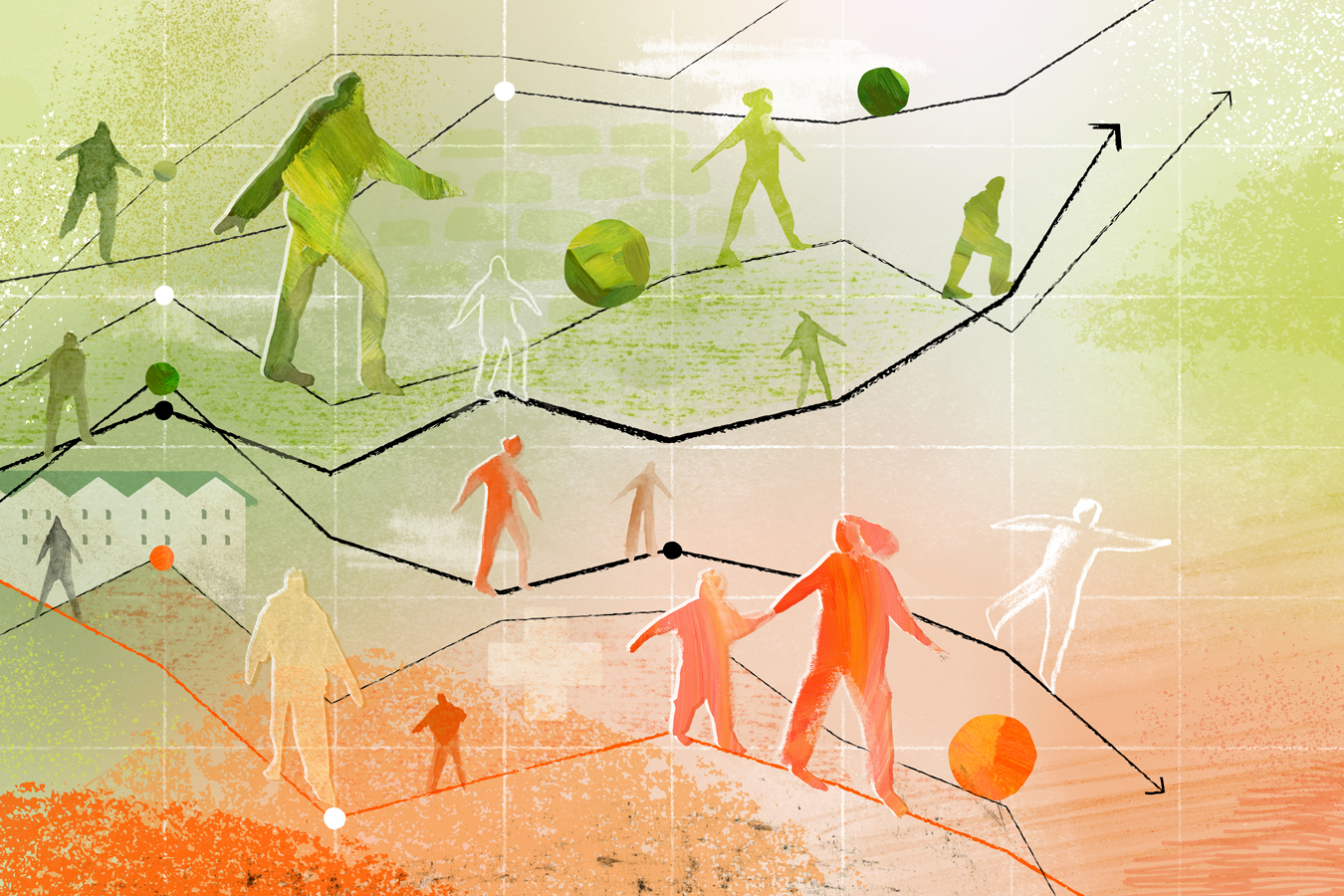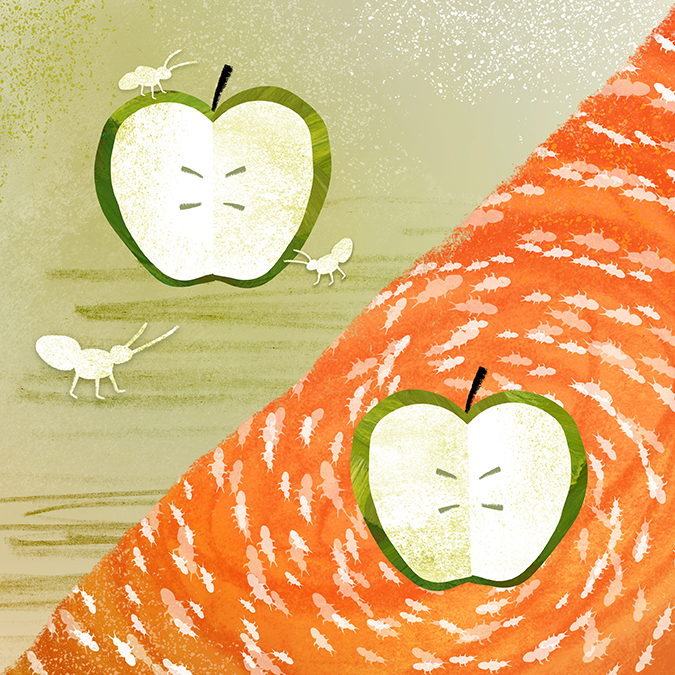
The gap between rich and poor impacts both mental and physical health—for everyone. And COVID-19 is taking this realization mainstream
With a state of emergency declared in Ontario, COVID-19 cases mounting and most of us confined to our homes, it is a period of deep anxiety for the province—and the world. And one of deep reflection, too. We are suddenly realizing that our collective health and well-being is inextricably tied to that of our neighbours—many of whom are disproportionately affected by this virus and its effects.
As the crisis continues, the gap between those who are doing well, and those who aren’t, is widening, with low-income workers being driven further into poverty and precarity—or into potentially health-threatening work situations. This has consequences for us all.
Income inequality, as it turns out, is something I’ve been researching and writing on for years, starting with one life-changing interview.
One day back in 2015, I was on the phone with a Toronto doctor who serves people experiencing homelessness. He said something that forever altered the way I view our city, our country and our world. The doctor told me that in societies that have a big gap between the rich and the poor, everyone’s physical health suffers—even the rich.
Shocked, I asked why. It was obvious how poverty made people unwell, but what was making everybody else sick? Nobody knew for sure, he replied. But it was thought to come down to stress. Likely caused by a lack of social cohesion. A result of severed connections.
In the years that followed, as I continued to work in current affairs radio, I began to see income inequality as the thread that ran through much of what we reported on every day. Housing, transit, polarized politics, gun violence, rising rates of depression and anxiety—in all of these stories, income inequality was forever lurking in the background, waiting to be acknowledged.
In the meantime, my own anxiety threatened to overwhelm me, and I started having chest pains at my desk. Forced to take time away from the newsroom, I dug into this topic for a book I began writing, Lean Out: A Meditation on the Madness of Modern Life. Several years of research followed, and what I learned astonished me.

Income inequality is a measure of the distribution of financial resources in a society. The United States, for instance, is home to an extreme gap between the haves and the have-nots. As of 2017, the three richest individuals in that country, Jeff Bezos, Warren Buffet and Bill Gates, owned more wealth than the poorest half of the American population combined—that’s some 160 million people. And on the global scale in that same year, the eight top billionaires controlled more wealth than the entire poorer half of humanity.
In Canada, too, things are far from equal. Between 1982 and 2010, for example, the rich got a lot richer while everyone else’s incomes stagnated. The top five percent of earners saw real income gains (taking inflation into account) of some 25 percent or more, while the top 0.01 percent enjoyed a 160 percent bump in their income. (That means if they had made, say, $1,000,000 in 1982, they’d be up to $2,600,000 in 2010.) As for the bottom 90 percent of Canadians, their real income increased during that time by just two percent.
This is a problem for many reasons. The world’s preeminent income inequality researchers, Richard Wilkinson and Kate Pickett, have amassed a trove of data showing that inequality makes for unhealthier societies. Life expectancy, literacy, infant mortality, imprisonment, murder rates, obesity, teen birthrates, mental illness (including addiction), social mobility, trust—all get worse across the entire income spectrum when the gap between rich and poor widens. “What we are looking at is general social dysfunction–related inequality,” Wilkinson explained in a TED Talk. “It’s not just one or two things that go wrong. It’s most things.”
The British public health researcher maintains that this pattern is driven by the psycho-social effects of inequality. Put more simply, this means feelings of inferiority and superiority—threats to self-esteem and social status—that lead to pervasive insecurity and stress. We have long known that stress can have destructive impacts on both body and psyche.
In Toronto—the most unequal city in Canada—these issues come into sharp focus. Indeed, a 2015 United Way report noted that the gap between rich and poor was widening in Toronto at double the national rate. In fact, income inequality rose here by 31 per cent between 1980 and 2005.
Laura McDonough, senior manager of Research, Public Policy & Evaluation at United Way Greater Toronto, agrees that income inequality is “the underlying force behind so many of our social issues that we see today.”
McDonough has observed inequality in our city playing out in a number of different ways. “You can see it happening between individuals and between households,” she explains. “You can also see it happening between neighbourhoods.” There are growing income gaps between young people and middle-aged people, between immigrants and Canadian-born citizens, and between racialized groups and white groups. “There’s a lot of different dimensions of inequality,” McDonough says. “But all of the trends for our region are troubling.”
Numerous factors contribute to this, including the rise of precarious employment with low wages, no benefits and zero security. Inequality influences many aspects of life, too, including the quality of public education (schools in wealthy areas have more fundraising power) and the healthfulness of the food sold in various postal codes.
As the gap widens, those who are doing well financially, and those who are not, become increasingly segregated. “It does have an impact on the entire community,” McDonough stresses. “It fractures us and pulls us apart, so that eventually you get to a point where people who live in the same places have completely different life experiences. And there’s no opportunity, or space, where those two people might cross paths and have a meaningful interaction.”
COVID-19, of course, has rendered this gap glaringly obvious—and has made bridging it a more pressing issue than ever. If the novel coronavirus has shown us anything, it is that we are all connected. And that we ignore this at our peril.